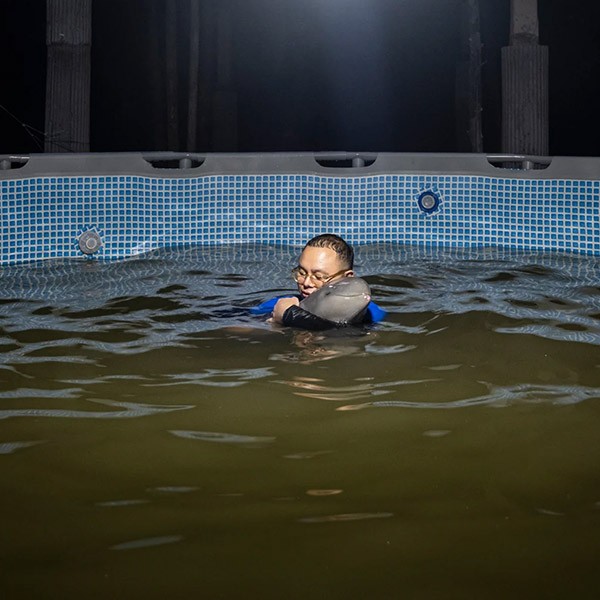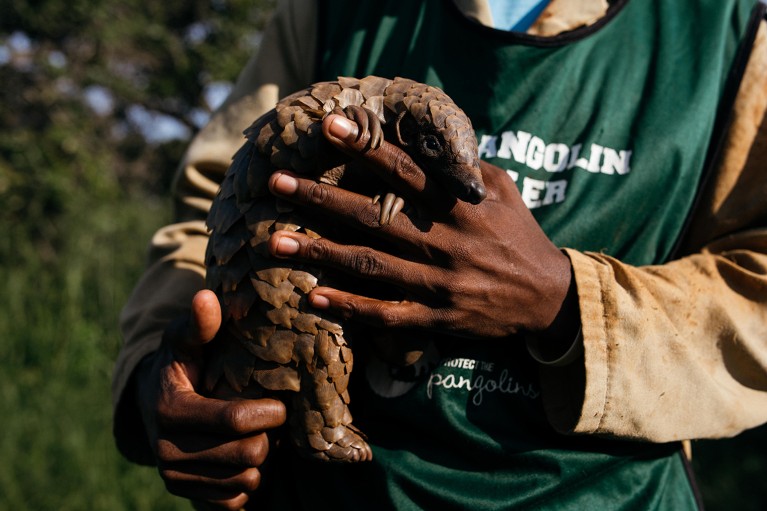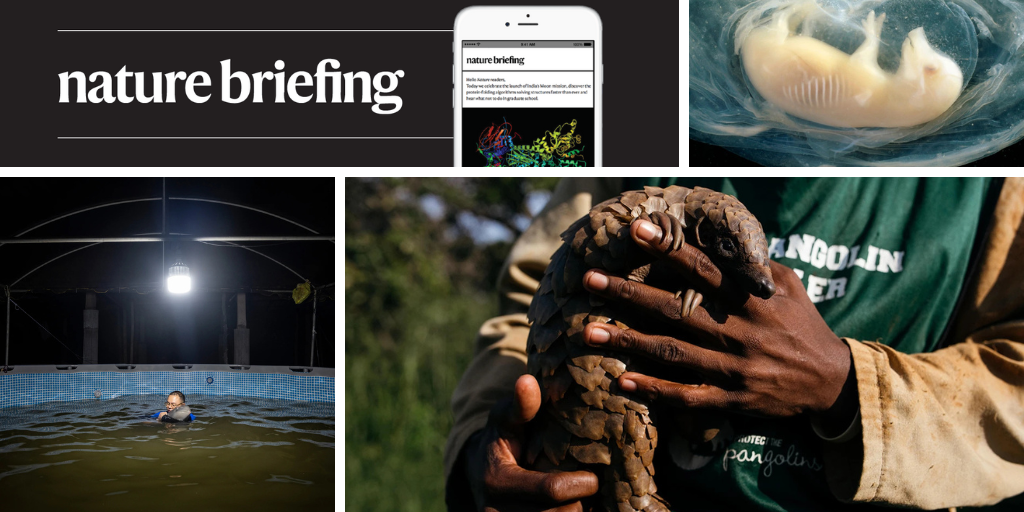You have full access to this article via your institution.
Hello Nature readers, would you like to get this Briefing in your inbox free every day? Sign up here.

A caretaker calms an orphaned Irrawaddy river dolphin (Orcaella brevirostris) to sleep during night shift at the rehabilitation facility of Marine Endangered Species Veterinary Hospital in Rayong, Thailand. (Sirachai Arunrugstichai/Getty)
Although he has pivoted to conservation photojournalism, former marine biologist Sirachai (Shin) Arunrugstichai still considers the ocean as his office. “I want to share new findings about the sea with other people,” he says. “I can reach more people with my photography than I can with my papers.”
Nature | 7 min read packed with stunning images
Researchers have grown hearts containing human cells in pig embryos for the first time. The embryos survived for 21 days, and during that time their tiny hearts started beating. Growing animal embryos that contain some human cells — called human-animal chimaeras — takes scientists a step closer to generating animals with human organs that can be used for transplantation into people. Pigs are a good candidate because the size and anatomy of their organs are comparable to those of humans, says developmental biologist Lai Liangxue.
The abundance of oxygen in Earth’s atmosphere seems to be linked with the strength of the planet’s magnetic field. Over the past 540 million years, the two appear to have risen and fallen in tandem, though it is unclear whether they directly influence one another, or are both controlled by a third factor. Explaining the link could help to reveal fundamental trends in the evolution of life on Earth — and could show astronomers the most promising places to look for signs of complex life on other planets.
Reference: Science Advances paper
Long-billed curlews (Numenius americanus), a North American bird species, eavesdrop on the barks of prairie dogs (Cynomys ludovicianus) for intel on the approach of predators. Prairie dogs have specific calls that alert their neighbours if a predator is closing in by land or by air. When nesting curlews hear these barks, they press their bodies to the ground, which makes them “essentially invisible on the Plains,” says ornithologist and study co-author Andrew Dreelin. Without the cues, researchers were able to get a remote-controlled ‘predator’ within 16 metres of the birds before they sensed danger.
Reference: Animal Behaviour paper
Features & opinion
“Never before have so many heads of state and governments met to discuss the seas,” said French President Emmanuel Macron at the UN Ocean Conference in Nice, which ended on Friday. The event resulted in a political declaration and a slew of voluntary commitments, including efforts to remove underwater munitions, tackle undersea noise and create more marine protected areas. Fifty countries have now ratified the UN High Seas Treaty, with dozens more promising to do so. (Sixty are needed for the agreement to come into force). Only patchwork progress was made on efforts to reduce marine plastic pollution and to regulate destructive deep-sea mining and bottom trawling.
Some of the features that make solar cells affordable, durable and efficient are at odds with the goal of making them recyclable: materials that work well together are not usually easy to pull apart. Solar-cell scientists Ian Peters and Christoph Brabec probe the trade-offs required to build the perfect panel.
Nature Reviews Chemistry | 9 min read
Mass demonstrations against the administration of US President Donald Trump took place across the United States on Saturday — but are protests effective at driving change? “The honest answer is ‘sometimes’,” said Lisa Mueller, who studies social movements, in our June 2024 feature. Large protests seem more effective than small ones; non-violent protests appear to be more potent than violent ones; unified goals might achieve more than diffuse demands do. Repression — by police, for instance — can win more support for protesters. “It’s a vibrant time to be studying protests,” Mueller says.
Nature | 10 min read (from 2024)
Where I work

A pangolin being held by a sanctuary worker in Zambia. Credit: Kang-Chun Cheng for Nature
The person in this picture works for a sanctuary in Zambia that rehabilitates pangolins saved from illegal trade — but has to remain anonymous. “The exact location is secret,” they say. “The poachers, who are usually armed, could target me or follow me to the sanctuary. Only my parents know what I do.” (Nature | 3 min read)
On Friday, Leif Penguinson was enjoying a scenic hike in Haute-Fillière State Forest in France. Did you find the penguin? When you’re ready, here’s the answer.
Thanks for reading,
Flora Graham, senior editor, Nature Briefing
With contributions by Jacob Smith
• Nature Briefing: Careers — insights, advice and award-winning journalism to help you optimize your working life
• Nature Briefing: Microbiology — the most abundant living entities on our planet — microorganisms — and the role they play in health, the environment and food systems
• Nature Briefing: Anthropocene — climate change, biodiversity, sustainability and geoengineering
• Nature Briefing: AI & Robotics — 100% written by humans, of course
• Nature Briefing: Cancer — a weekly newsletter written with cancer researchers in mind
• Nature Briefing: Translational Research — covers biotechnology, drug discovery and pharma


